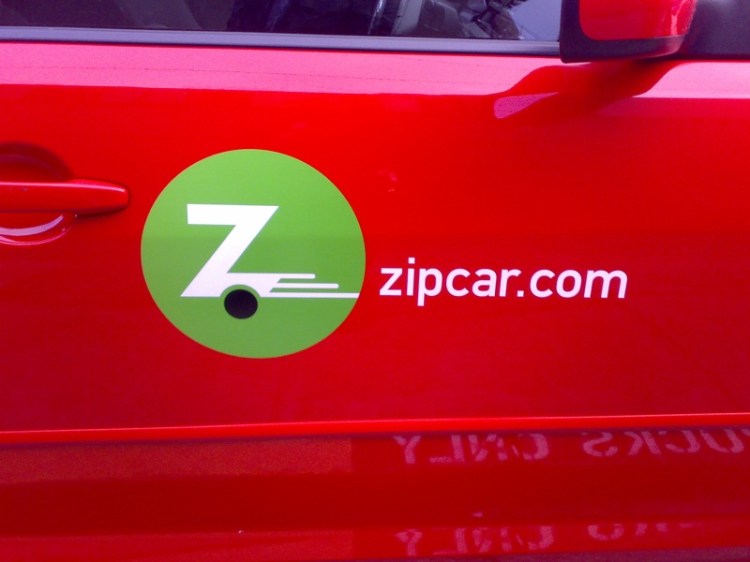Zipcar is doing something right.
Since parent company Avis acquired Zipcar just three years ago, the company’s market value has exploded, tripling to a market value of $6 billion. Zipcar is “an engine of growth for us, and we expect that to be the case for quite some time,” Avis stated in its most recent earnings call in February.
To explain the magic behind the Zipcar expansion story, we’ve invited Brian Harrington, EVP and Chief Marketing Officer of Zipcar, to talk at our GrowthBeat Summit in Boston on June 1-2, an invite-only event where top marketing execs gather to strategize and debate the complex challenges and opportunities facing them today.
Harrington is responsible for all member acquisition and engagement for Zipcar, along with global partnerships, public relations, and building the global brand. He sees Zipsters — the name Harrington calls his company’s customers — at the center of the success. And because the business model depends so much on customers’ enablement of the brand — by returning cars on time, keeping them clean, and filling them up with gas – engagement with them is critical.
Request your personal invitiation to GrowthBeat Summit here.
 Shortly after taking over the CMO role at Zipcar in early 2013, Harrington began focusing on creating local relevance for Zipsters to help achieve this, introducing performance-based acquisition, programmatic ad buying, and the Zipcar blog, Ziptopia, designed to engage its urban Zipster around driving escapes and culture, featuring articles such as “Get your hands dirty at these Bay area farms” and “Don’t touch that phone: how to plan a technology detox.”
Shortly after taking over the CMO role at Zipcar in early 2013, Harrington began focusing on creating local relevance for Zipsters to help achieve this, introducing performance-based acquisition, programmatic ad buying, and the Zipcar blog, Ziptopia, designed to engage its urban Zipster around driving escapes and culture, featuring articles such as “Get your hands dirty at these Bay area farms” and “Don’t touch that phone: how to plan a technology detox.”
The company is also testing a one-way vehicle availability in Boston, in preparation for rolling it out in other markets, ensuring it maintains its position against competitors such as Car2Go and its one-way model.
Harrington also created a strong analytics practice and hired a small marketing-dedicated engineering team that can pivot quickly to optimize messaging and conversion on on the Zipcar site and app.
Going forward, converting more urban car owners to car sharers, particularly in new markets, depends on educating potential Zipsters on how Zipcar really works. Zipcar enjoys great brand recognition, but for many, it’s still kind of magical and mysterious.
Harrington’s marketing mix — including digital, social, and mobile marketing aligned with offline efforts — appears to be working: Zipcar’s membership is more than 900,000 worldwide, its pricing has increased, and both usage and membership revenues are at record levels. Zipcar continues to expands its fleet and locations. Just last month, it added seven more additional airport locations to its network — doubling the number airports Zipcar covered in 2013.
Some of the other speakers at GrowthBeat Summit
Lynn Vojvodich, EVP and CMO of Salesforce
Vojvodich joined Salesforce in 2013 and has been very vocal about the need for change in a marketing world that is inextricably fused with technology. Speaking with McKinsey at the end of last year, she said, “As a CMO, if you’re not an agent of change — constantly innovating, constantly changing, constantly pushing the boundaries — then you’re working at a company that will be obsolete in five to ten years.”
Peter Hamilton, CEO and Partner at mobile attribution analytics company TUNE
TUNE works with some of the biggest leaders in the mobile-first space including Uber and Spotify. Just as Salesforce led the charge in SaaS, TUNE is setting the course for the way marketers use data to connect with customers in a multi-device universe.
Michael Williams, chief marketing officer for The Grand Prix of America, Formula 1 Williams faces the challenge of bringing awareness to a sporting event that has never been hosted in America, but instead has been seen for 60 years as exclusively international. The intent is to bring the Formula 1 race to New York in June 2016.
Scott Brinker, Cofounder and CTO of ion interactive
(And the prolific blogger behind chiefmartech.com.) In his annual tracking of martech, Brinker found that the marketing technology landscape in 2015 includes 1,876 vendors across 43 categories. That’s not only an astonishing number in its own right, but it’s nearly doubled in just the one year since Scott Brinker last compiled the list.
John Kennedy, CMO of Xerox
Appointed to Xerox last July, Kennedy previously was VP of marketing for IBM Global Business Services. Last year, he was recognized by the CMO Club with a Marketing Innovation Award “based on a marketing executive’s demonstrated leadership in creating an innovative marketing environment that changes the game for ROI, customer engagement, and/or for the industry.”
Deena Bahri, CMO for Birchbox Bahri leads growth for the successful subscription service that delivers personalized boxes of beauty, grooming, and lifestyle products on a monthly basis. Last year the company was valued at $485 million with 800,000 subscribers. Bahri has talked openly about how essential data is to the success of the company. Prior to joining Birchbox in 2011, Bahri was senior director of marketing at Gilt, another e-commerce shopping destination.
VentureBeat's mission is to be a digital town square for technical decision-makers to gain knowledge about transformative enterprise technology and transact. Learn More

